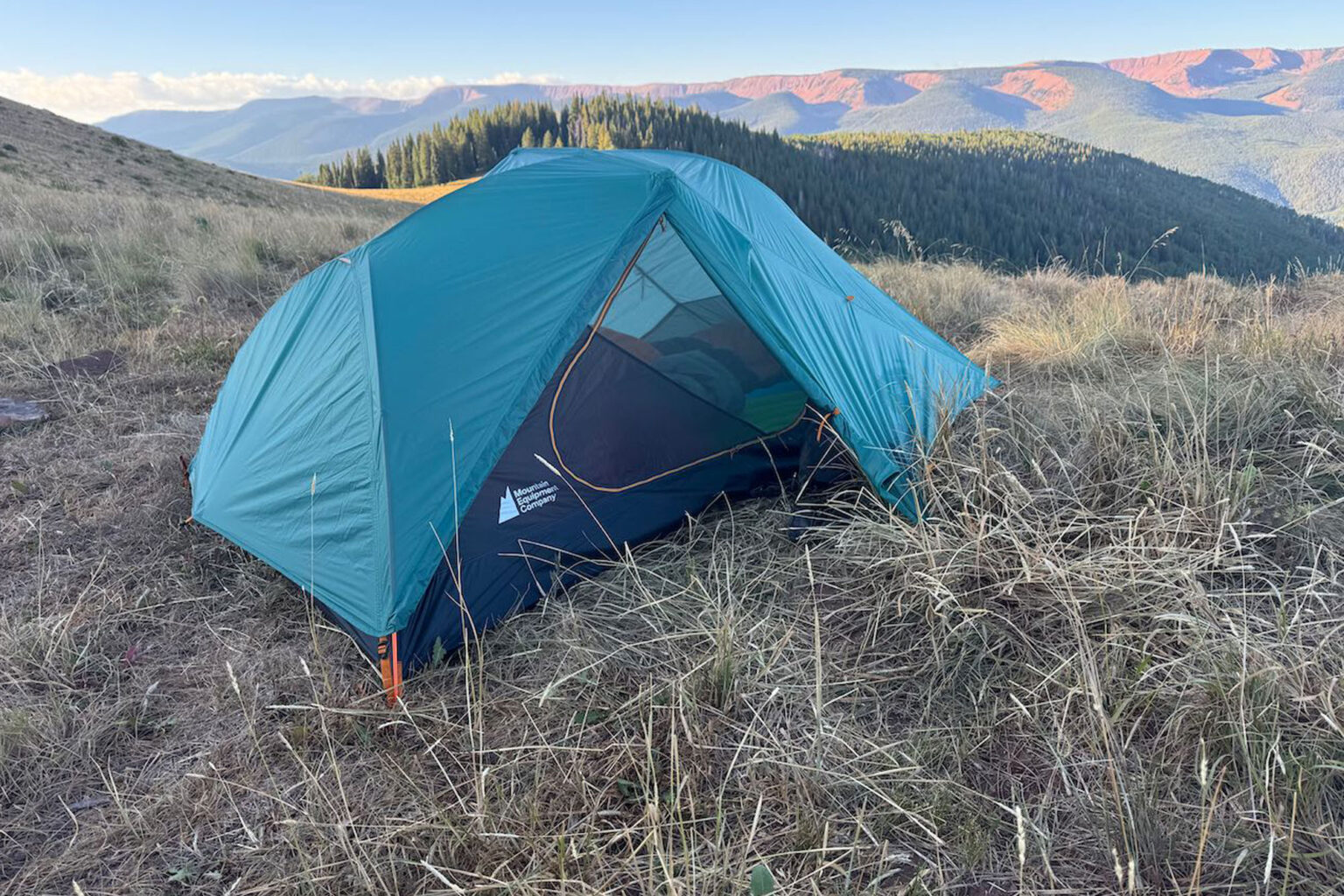We rolled into camp dusty, sweaty, and depleted as the sun sank. The end of a brutal day of bikepacking in the scorching heat of summer. I dragged MEC’s new Spark UL 2 tent out of my handlebar bag and shook it open. Within seconds, I had it staked out and pitched to perfection.
It’s rare that I can pitch a semi-freestanding tent perfectly the first try, especially when I’m practically seeing double after a long day of grinding in the sun. But the new Spark UL is intuitive and well-designed for deep backcountry adventures.
It was only when a quick but intense rain blast shook my tent companion and me in the middle of the night that I came to fully appreciate the thoughtful balance of features, protection, and light weight that the gear tinkerers at MEC packed into the Spark UL 2. This must be a pricey tent, I thought to myself.
But when I realized that the $549 listing was, in fact, Canadian dollars (~$400 USD), my intrigue was tickled. I set out into the woods to see for myself if the Spark UL 2.0’s dollar-per-gram offer was as good as it seemed.
In short: MEC’s new Spark UL 2 tent is all about the balance of ultralight bang for your buck. The tent sports magnetic vents, adjustable camming guylines, an interesting sushi-rolling stuff sack, and intuitive pole connection points. It actually fits two full-sized humans, pitches quickly and intuitively, and even feels a tiny bit burlier than most of the semi-freestanding ultralight tents I’ve used.
-
Great value -
Outstanding guyline tensioning system -
Comfortable for two sleepers -
Easy to set up
-
Heavier than close competitors -
Semi-freestanding design comes with tradeoffs -
Fast-fly/Ultralight setup with ground tarp doesn’t work
MEC Spark UL 2 Review
MEC has been on a tear, releasing great-looking products at great prices. The Canadian co-op has been in the game since 1971, and it has quite a few tents on offer for every conceivable use case.
Enter the Spark UL 2 — the brand’s lightest backpacking tent, competing head-to-head in its stores and website with top brands in the space. It’s an updated version of the original Spark UL that drops an impressive 25% of the weight.
Space and weight are always at a premium when you’re pedaling or hoofing it into the backcountry. The Spark UL 2 is decently compact and lightweight compared to its direct competitors. It’s not the leader in either of these categories, but it’s no slouch, either. The Spark UL 2 weighed in at 1,242g without stakes. In a price-per-gram sense (or rather price-per-lack-of-grams), the Spark UL 2 ranks highly.
For comparison, Mountain Hardwear’s similarly designed but single-door Nimbus UL-2 tent ($420) weighs in at 970g. Nemo’s Hornet OSMO Ultralight 2 ($450) weighs 1,134g. Big Agnes’s Tiger Wall 2 ($500) clocks in at 992g. They’re all in the same ballpark, even if the Spark UL 2 is on the heavier end of the spectrum. But again, the $400 price tag scores some bonus points.
Tent Design
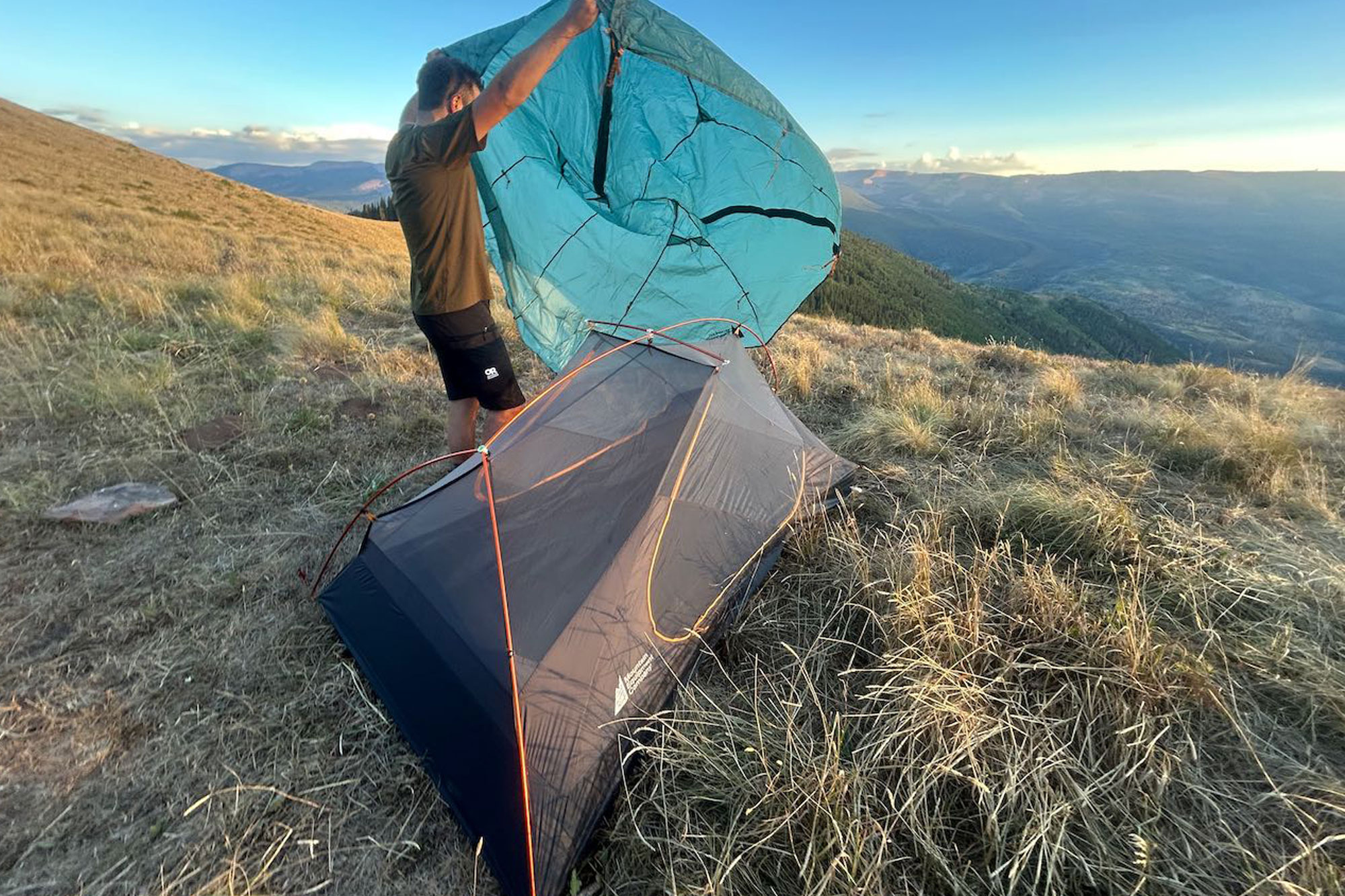
The Spark UL 2 isn’t lightweight by accident. It utilizes a semi-freestanding single pole design that’s essentially a “Y” and a crossbar. The arms of the “Y” connect to the corners at the head of the tent. The crossbar gives the tent just enough volume widthwise for two people to sit upright inside.
MEC gets it down to an impressive weight by utilizing very lightweight fabrics. The 15-denier nylon and 15-denier mesh that make up the tent body are very thin. The polyurethane-coated nylon ripstop floor is only 20 denier. It’s all pretty dang minimalist.
While I didn’t find any durability issues during the test period, utilizing the matching footprint (sold separately) isn’t a bad idea to extend the life of the floor. I kept a stash of tenacious tape in the stuff sack just in case.
The 15 Featherlight DAC NSL poles segments are also light, as you might have guessed. At about 39 cm each, they didn’t quite fit between my drop bars in my handlebar bag, but that’s not out of the ordinary. That length won’t matter much to backpackers or other campers.
Semi-Freestanding
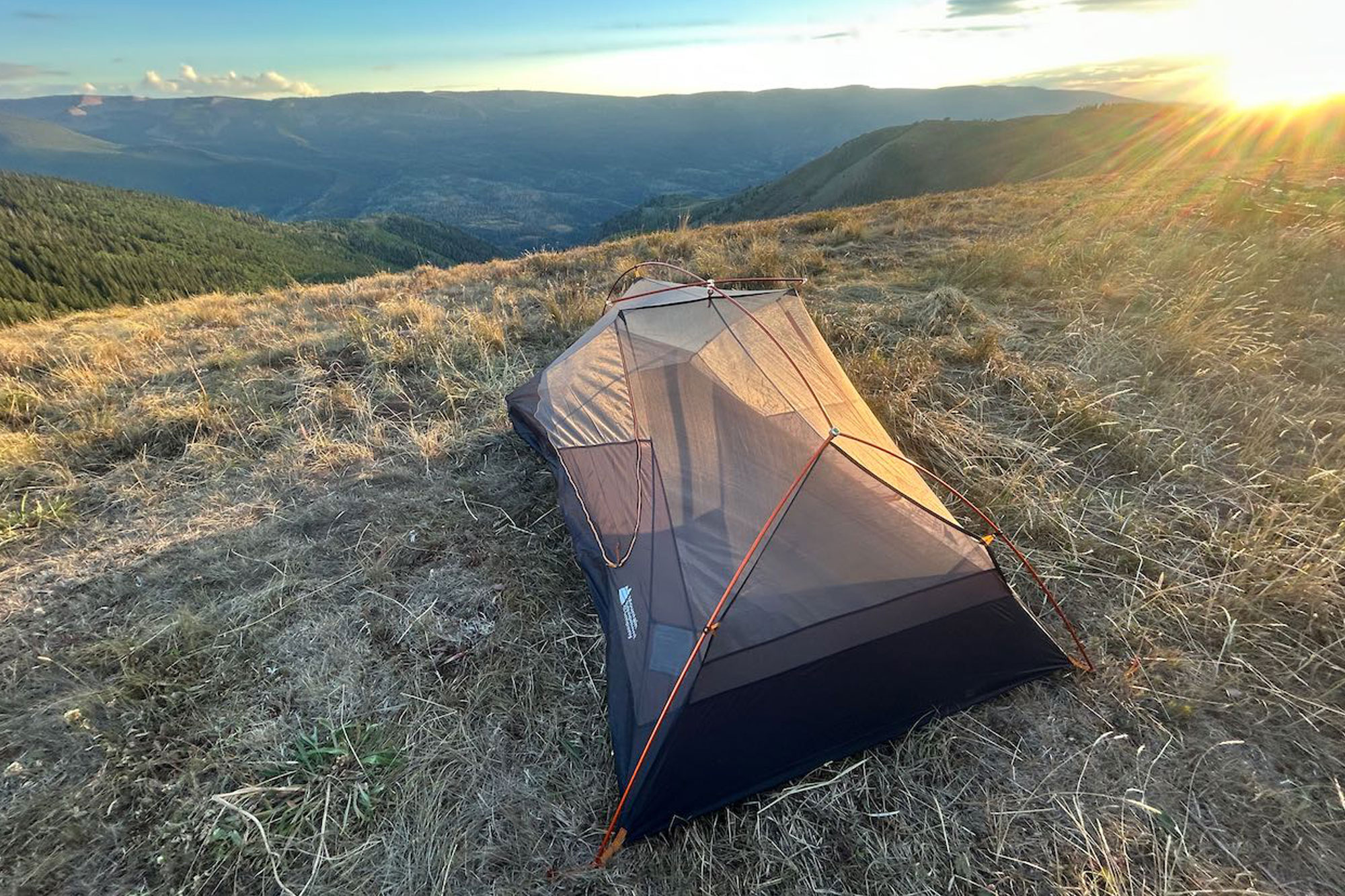
The Spark UL dips into the ultralight realm by ditching excessive pole segments at the foot box. In exchange, the southern corners don’t enjoy the structure provided by a pole. The center pole acts like a backbone that connects to the main tent body in the center of the floor at the foot. Two well-placed tent stakes are critical for these two corners — they pull on self-equalizing guylines that provide structure.
Without good stakes, those corners will be tensionless and flappy. It’s a clever way to cut out a few tent pole segments. However, it comes with a distinct tradeoff in this tent’s versatility — good stake placement is critical for setting it up. That means it won’t be a great option for camping on very rocky surfaces, sand, pavement, etc.
The Spark UL 2 comes with seven high-quality lightweight stakes that withstand caveman-style rock pounding into firm soil. Like any semi-freestanding tent, the stakes are critical for pulling the tent taught in every direction and keeping the fly from touching the inner tent.
One of my favorite features of the Spark UL 2 is the adjustable camming guylines sprinkled around the fly’s margin. They add some flexibility to stake placement and eliminate the need for trucker hitches to add and hold tension on the lines. This makes setup and ongoing tension maintenance much easier, less painless, and quicker than the tents of my youth.
Tent Sizing
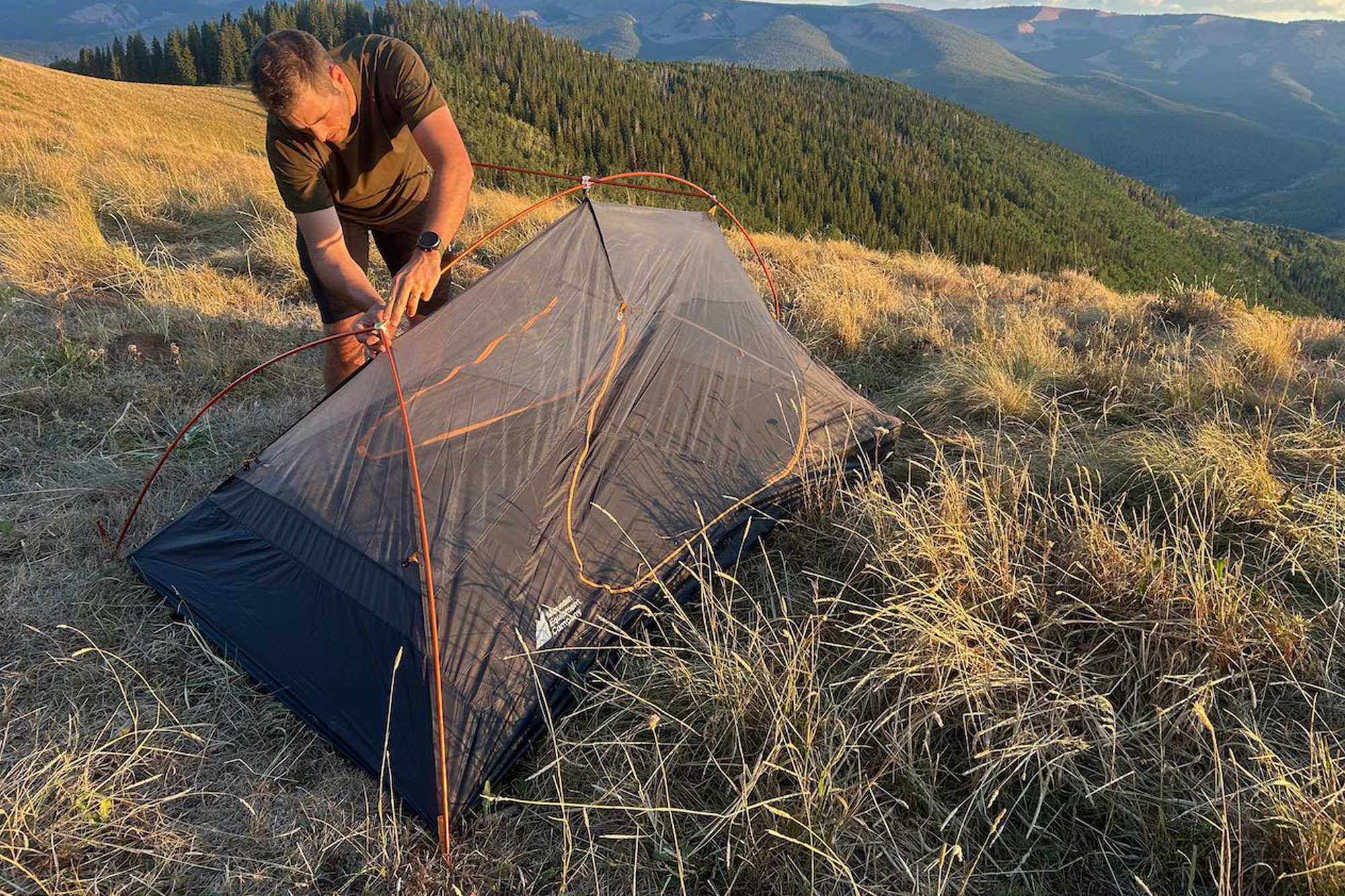
When I first set the tent up, I was skeptical that my similarly sized buddy and I would be able to sleep comfortably side by side rather than cat-dog style. But when we were forced to pitch the tent on a slope, we had no choice but to snuggle up shoulder to shoulder.
We surprisingly had enough room.
Even our big cushy sleeping pads had some breathing room in the middle and on each side. So I can confidently say that the Spark UL 2 is, in fact, a two-person tent rather than the 1.5-person capacity of many ultralight tents on the market. Don’t get me wrong, it was cozy, but there was enough room — a palace for a single sleeper.
As for length, my vertically abundant 6’6” friend crawled in to test the dimensions. He fit comfortably. The Spark UL 2 earned his approval for the 6-foot-plus crowd.
Entry and Exit
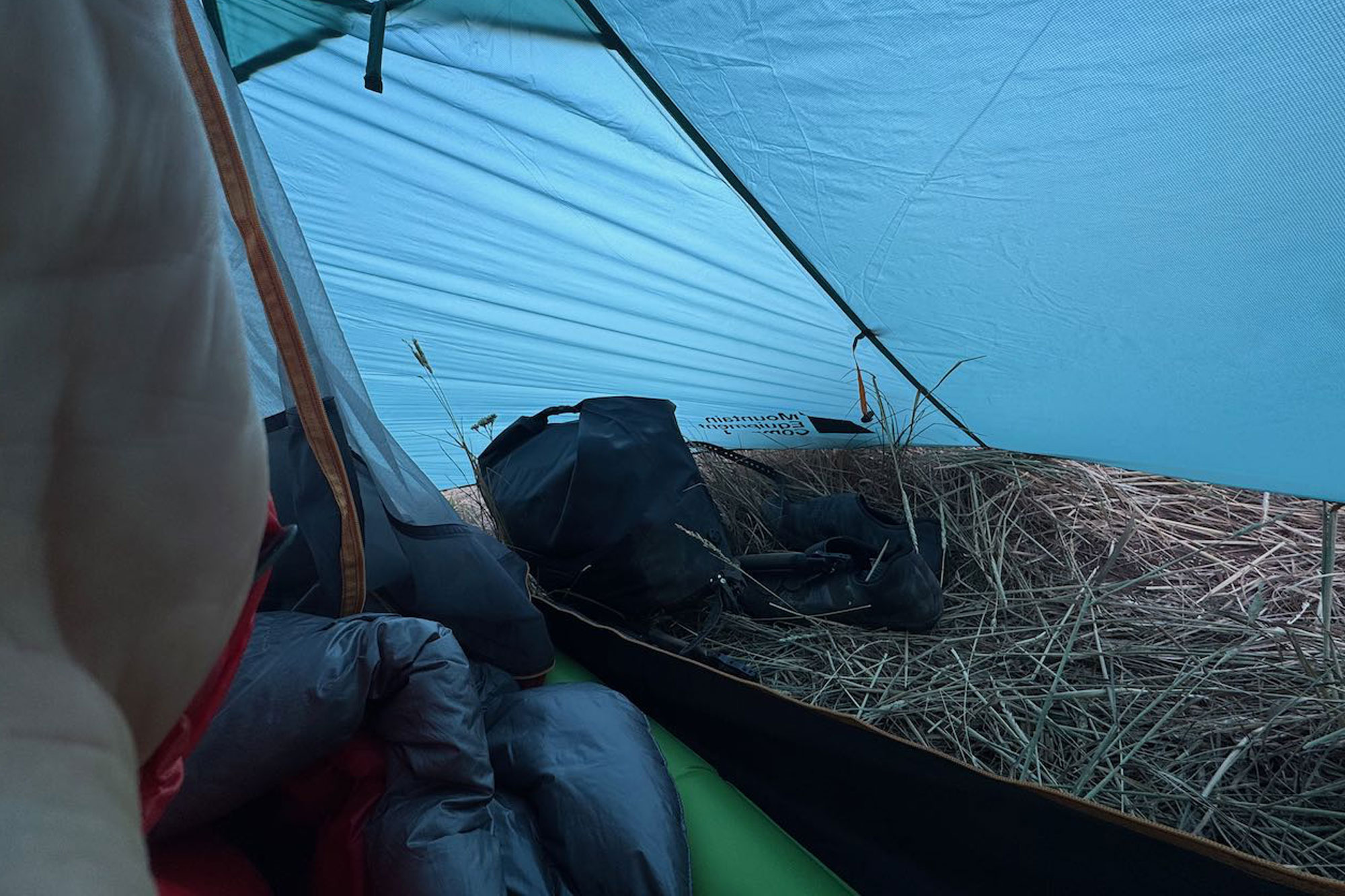
A key feature for dual-snoozer compatibility is the Spark UL 2’s full-sized doors on each side of the tent. I really appreciated this for middle-of-the-night bathroom breaks and early morning coffee emergencies.
Side doors are also much easier to get in and out of than a front door. And I couldn’t help but notice that the zippers glided exceptionally smoothly (I wasn’t the only one who noticed, either).
The rainfly forms small but adequate vestibules over each door. They’re big enough for a backpack or a pile of bikepacking bags but not much else. The vestibules zip open from the side of the tent rather than from the center. The door rolls up neatly and secures the middle of the vestibule to stay open and out of the way. When the wind rolled in, it refused to flap loose.
Internal Storage
As soon as a friend and I dropped our odds and ends into our respective sides of the tent, it became clear that internal organization pockets are one of the features the Spark UL 2 nixed in its quest for weight savings. Each sleeper has a small corner pocket at the head of the tent with roughly a liter of volume. It was enough for my glasses case, toothbrush, and Leatherman, but not much else.
So most of our junk was quickly co-mingled due primarily to a lack of organizational forethought.
Another pocket or two would have been nice, but it’s a reasonable tradeoff. I liked the packed size and weight more than I would have enjoyed better organization. The rest of the interior is similarly streamlined. There’s a loop to hang a light and just enough space for sleeping. That’s basically it.
Speaking of storage, MEC touts the Spark UL’s unique sushi-rolling stuff sack. There are pockets for each of the tent’s elements, and it was a snap to get it all in there and rolled up.
Did it blow my mind with innovation or advantage? Not really. It packs down to about the same size as it would in a stuff sack, even if it’s a little bit quicker to put together. I tend to separate out the tent, fly, and poles when I’m packing, so I didn’t find much utility in the system, even if it’s a neat feature.
Weather Protection
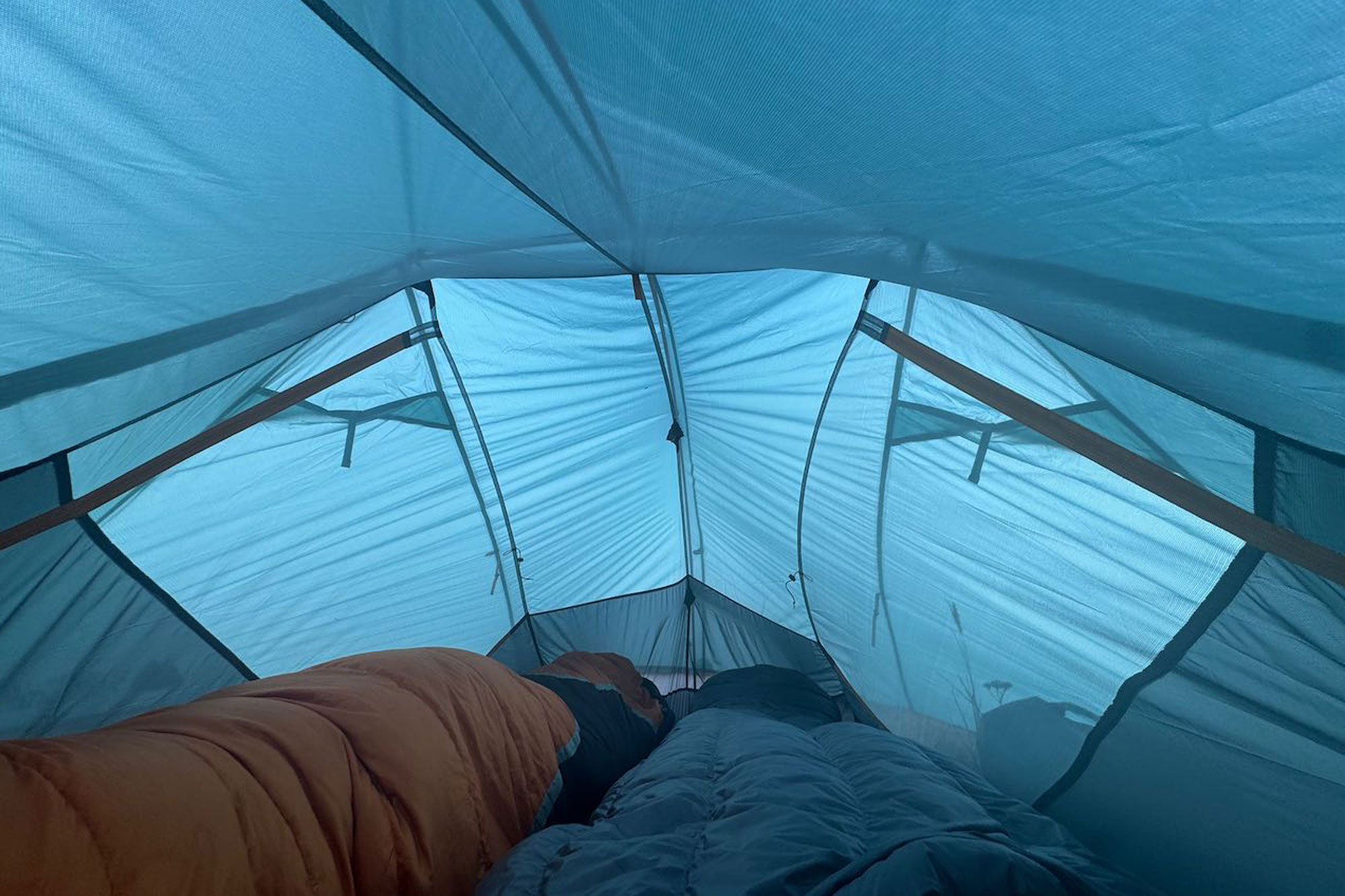
I won’t pretend that it’s been anything but a hot, dry summer in Colorado. I don’t have days on days of lounging around in the Spark UL 2.0 playing cards while the rain came down. But one of my overnights lined up with a brief but intense storm that doused the tent and tested the structure. Simply put, I stayed dry. The rainfly did its job.
The foot of the tent got pushed around by the wind during that dousing. That’s when I most felt the tradeoff of semi-freestanding versus actual freestanding. The single-pole backbone flexes with big gusts much more than a tent with a sturdier triangular pole frame connected to each corner.
It didn’t come anywhere near collapsing, and it remained watertight. But the flapping and flexing didn’t lend itself to good sleep. If you have a hunch that wind or rain is in the forecast, it’s worth setting the Spark UL 2 in a relatively wind-protected area.
The tent body is primarily breathable mesh, which kept an ample breeze flowing. With the vestibule open, a nice crossbreeze kept the inside from getting swampy even on a particularly hot night. When closed, some condensation accumulated on the inside of the fly while a friend and I snoozed. But it wasn’t more than I expected.
The rainfly has two vents propped open by magnetic props to keep the air moving even when the weather rolls in. The magnets are a neat feature, and I’ll take just about any alternative to Velcro for long-term durability. MEC should double down on the magnet idea. I could see them being useful on the rainfly’s doors and elsewhere.
Fast Fly Setup
The Spark UL 2 does most things right. The only thing that didn’t impress me was its advertised ultralight (aka “fast-fly”) setup option. Several lightweight tents on the market can be set up with just the footprint, poles, and rainfly, skipping the weight and bulk of the tent body. The Spark UL seemingly has all the pieces to make it happen.
It was only when I was mid-setup that I realized a glaring issue — the fittings under the rainfly don’t connect to the ends of the tent’s crossbar the way the fittings on the tent body do. So, the fittings just loop around the crossbar pole, which doesn’t provide much actual structure.
You can still set it up fast-fly style with good, strong stake placement despite this oversight. But the resulting shelter isn’t nearly as sturdy as it would be if that crossbar were fixed in place underneath the fly.
There’s a real risk of that crossbar shifting under a big wind blast and eliminating any horizontal roof structure. You wouldn’t be sleeping much in that scenario. If the ultralight fly-footprint setup option is important to you, look elsewhere.
MEC Spark UL 2 Tent: Conclusion
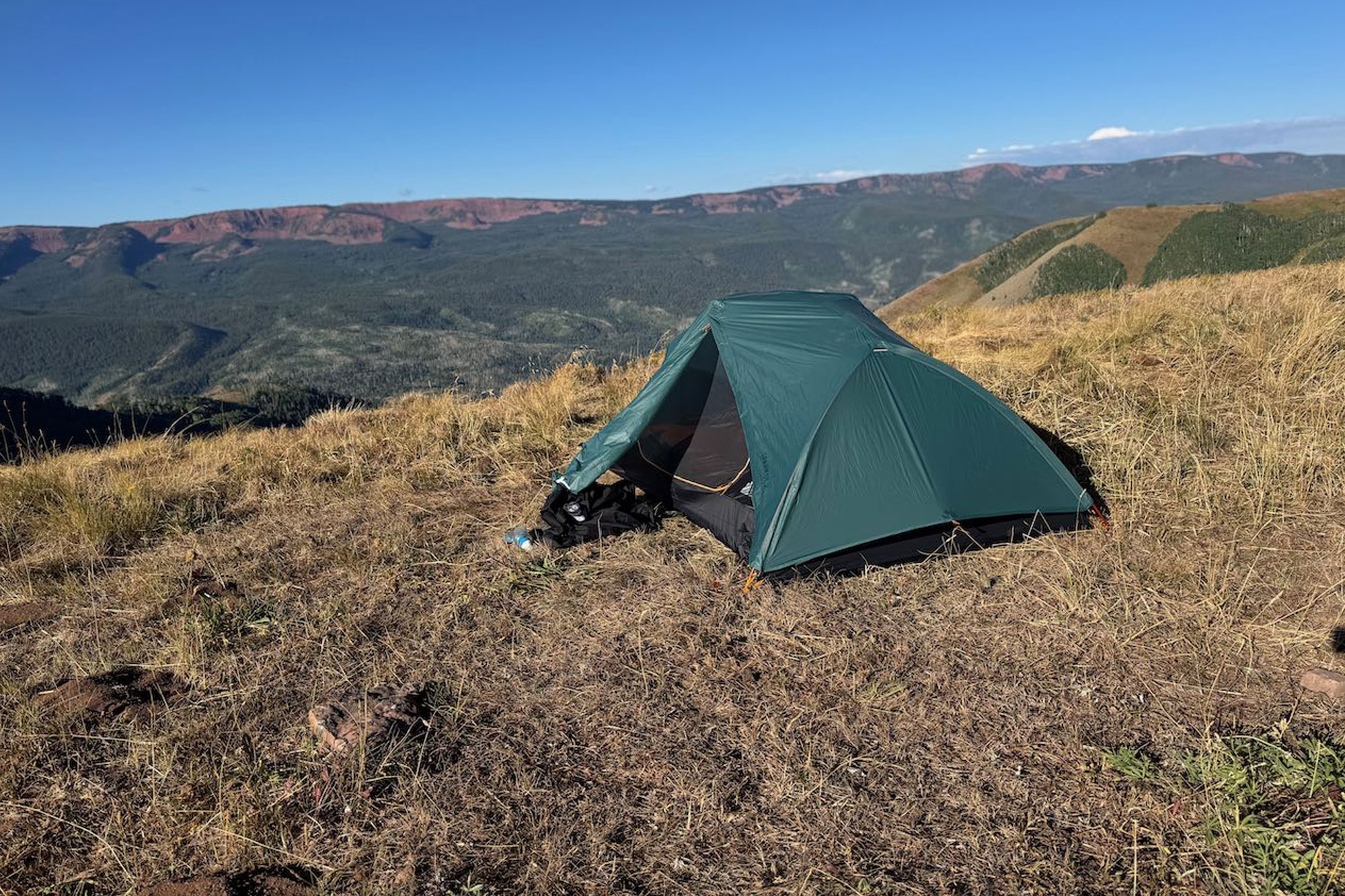
The Spark UL packs in some great features, some of which are completely unique. Others, like the semi-freestanding crossed “Y” pole design, are the backbone of other tents like NEMO’s Hornet OSMO 3p. NEMO also utilizes the camming guylines that stole my heart.
The most innovative features are the magnetic fingers that prop open each vent and the sushi-rolling stuff sack, both of which are cool but far down the list of features that make this tent shine.
The Spark UL 2 stands out thanks to its focus on the basics. It’s really easy to set up, it’s relatively sturdy and weatherproof for such a featherweight (assuming good stake placement), and it’s legitimately roomy enough for two snoozers. MEC managed to make that all happen at just $400.
Are there lighter options on the market? You bet. GearJunkie has tested them. But MEC makes a strong price-to-performance case with the Spark UL 2. It’s worth a look for backpackers and bikepackers on the hunt for an ultralight bargain that keeps up with its pricier rivals.
Read the full article here



